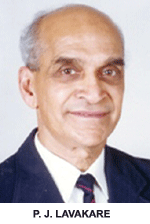 In this column I intend to raise a few issues which will affect our education system in the future, as the Indian economy meshes with the phenomenon of globalisation. It’s unfortunate that the country’s educators aren’t stepping forward to speak up on such vital issues. This article is meant to make them get engaged!
In this column I intend to raise a few issues which will affect our education system in the future, as the Indian economy meshes with the phenomenon of globalisation. It’s unfortunate that the country’s educators aren’t stepping forward to speak up on such vital issues. This article is meant to make them get engaged!
The Indian higher education system cannot remain isolated from the global developments taking place around us. Viewed from an international perspective, the following four issues will affect higher education in the coming years: (i) the international mobility of students; (ii) the concept of ‘education as an industry’ as envisaged under the Global Agreement on Trade in Services (GATS); (iii) the internationalisation of higher education; and (iv) the challenge of resource mobilisation.
The relevance of these issues from the educator’s perspective are discussed below.
The international mobility of students. Indian students are venturing abroad for higher education in ever greater numbers. It is necessary for teachers to understand that student mobility is a world-wide phenomenon, not restricted to India. In 2007, 2.8 million students studied outside their own countries. Of these, China contributed about 15 percent, and India 5 percent. At one stage India was worried about this “brain drain”, but in the new global-ised economy, our talent abroad is now looked upon as a “brain bank”. Never-theless the shortage of manpower in many sectors of the economy back home, including our educational institutions, is a matter of grave concern. The teaching profession in India is unable to attract even local graduates, leave aside those that go abroad. The teachers’ community should step forward and speak up on how to make their profession more appealing.
Education as an ‘industry’. Education, which has always been considered a ‘social good’ in India, is now being increasingly regarded as a ‘tradable commodity’ under the impact of globalisation. To promote global trade in commodities, the World Trade Organisation (WTO) has been established to draw up the rules of trade between nations. Under WTO, member nations (including India) have evolved a protocol named General Agreement on Trade in Services (GATS).
Under GATS, governments have agreed to include ‘education services’ as a tradable commodity. Western countries are keen to provide various education services such as education testing and also perhaps formal education programmes, by promoting degree awarding institutions in India under company law. A new Bill approved by the cabinet (but yet to be introduced in Parliament) allows foreign education providers to establish campuses in India with the approval of the government of India, under conditions that will be specified in this Bill. If it becomes law, teachers from India will have the opportunity to sign up with foreign universities establishing Indian campuses.
The teachers’ community has a role to play in setting the agenda for new opportunities in the education sector, as it transforms from ‘social good’ into possibly an ‘ethical commercial’ activity.
Internationalisation of higher education. It is now received global wisdom that 21st century students should have global exposure to different facets of life, so they’re comfortable with operating in the emerging global marketplace. In particular, corporate enterprises doing business in different parts of the world prefer employees who look beyond national boundaries, and learn the nuances of diverse business cultures. Against this need for ‘global citizens’, the challenge confronting higher education institutions in India is to produce global citizens on the one hand (to enhance global employability), while keeping them firmly rooted in Indian traditions and ethos. Teachers have to debate on how our campuses can be internationalised and still retain their Indian character.
Resource mobilisation for higher education. The demand for higher education is rising around the world, and India is no exception. Nearly 88 percent of the 18-24 age group who should be in college is outside the higher education system, because of a demand/supply imbalance in tertiary education. Therefore higher education must flow from private education providers. The National Knowledge Commission’s report on higher education has suggested innovative measures for raising resources. In western society, alumni generously give back to their alma maters and philanthropists magnanimously endow educational institutions. In India the culture of giving back to alma maters is a rarity. Against this backdrop, western models need to be studied, and solutions relevant to Indian situations have to be found.
Undoubtedly, there’s urgent need to reform the education system in general and more specifically higher education. The changing global higher education scenario suggests opening up and deregulating the higher education system to enable foreign education providers to enter the Indian education market. Teachers and students are the most affected parties in this changing scenario. Unfortunately, the voice of these two stakeholders is hardly heard at all.
(Dr. P.J. Lavakare is a former executive director of the US-India Educational Foundation)